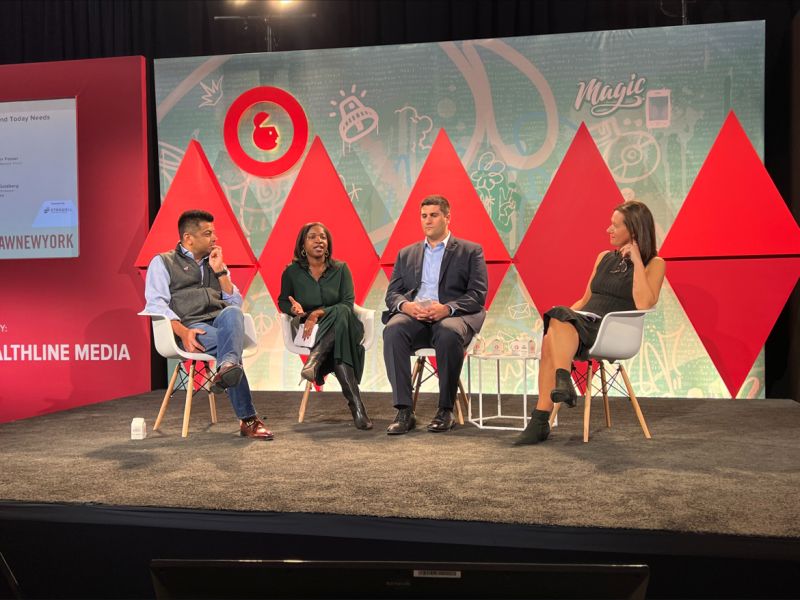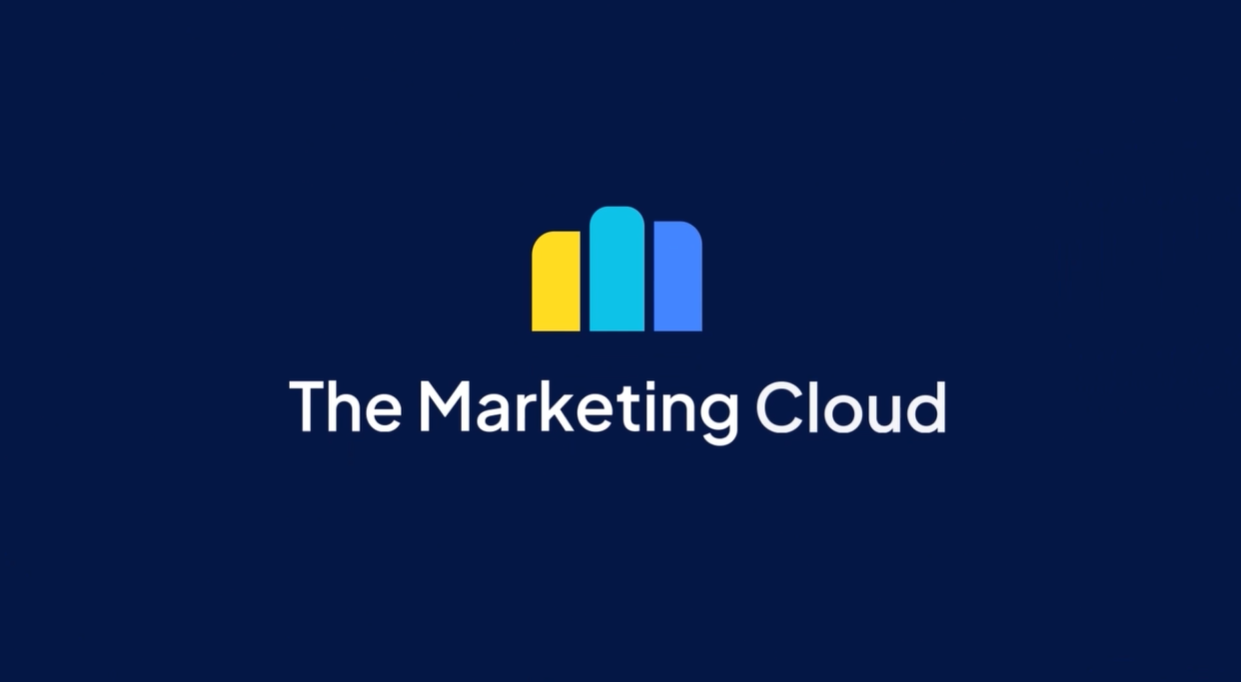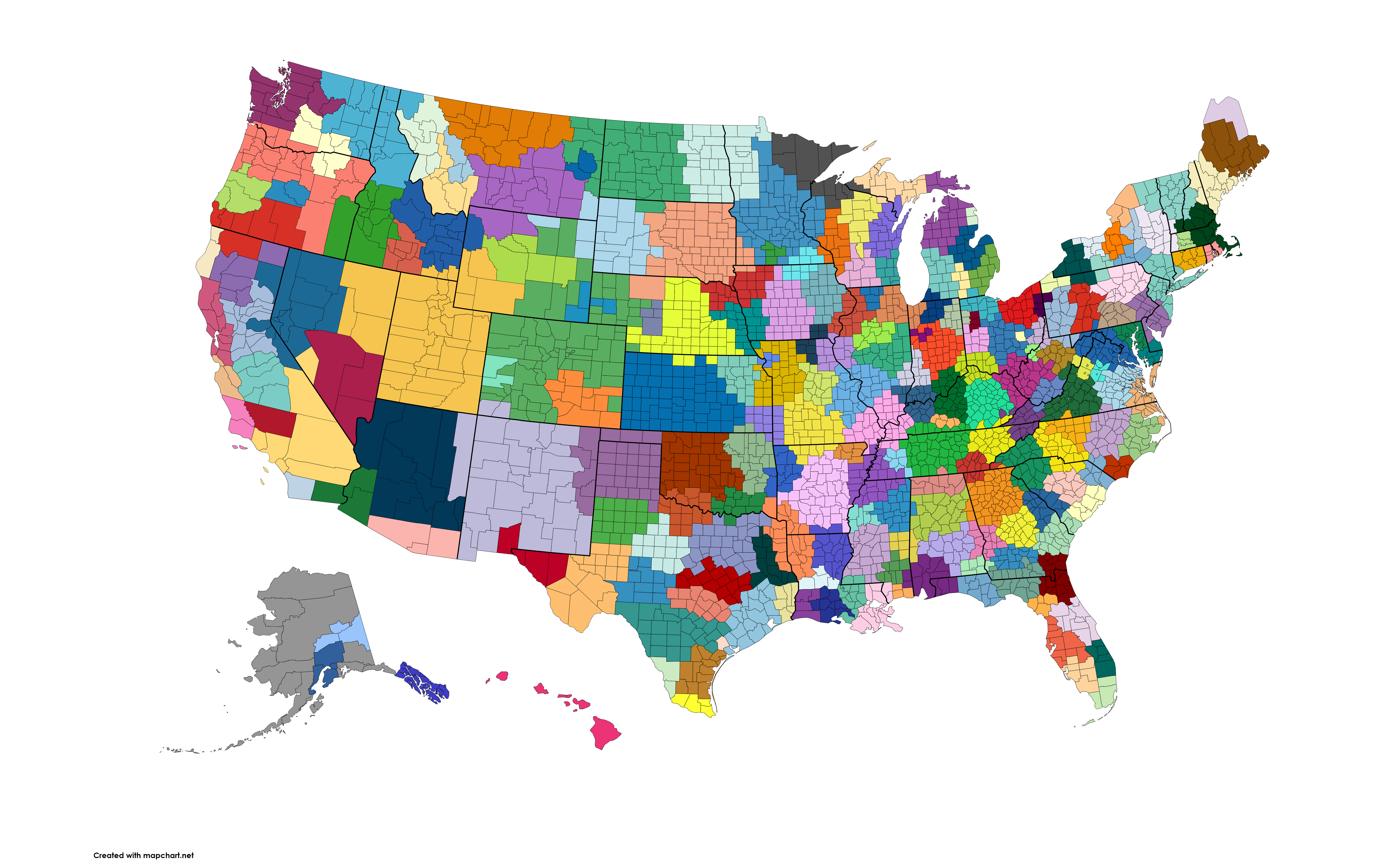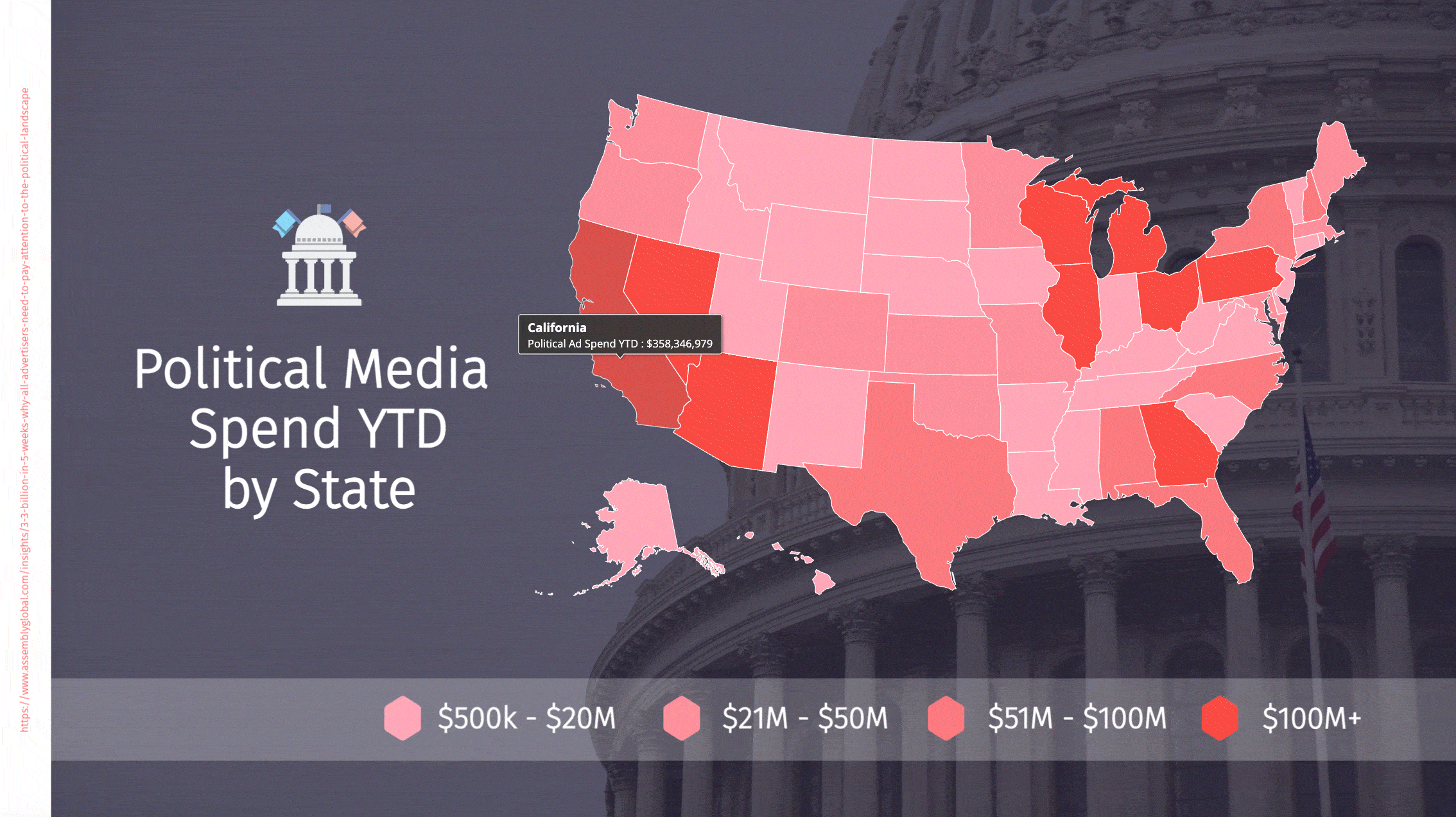CONTACT
hello@stagwellglobal.com
SIGN UP FOR OUR INSIGHTS BLASTS

Missed Advertising Week New York this week? We distill the biggest brand takeaways on brand fandom, political advertising, and media channel transformations below. Follow Stagwell on LinkedIn to keep up with the insights.
Rise of Brand Fandom – Move over, sports teams and celebrities.
Fifty-seven percent of consumers consider themselves a fan of a brand or product – higher than sports (48%), movies (52%), celebrities (54%), or online influencers/personalities (37%).
The brands that take a holistic stake in consumers’ lives will drive loyalty, affinity, and advocacy–and not just in the moment. Fandom is not a fad or a flash in the pan; 2 in 5 brand fans have been fans for over 10 years. Focus on helping consumers develop their personalities through your brand by delivering marketing, events and experiences, and content that gives them a platform to express that personality.
“Fandom is critical in the luxury space. Luxury is no longer defined as the most expensive thing –it’s defined by insider knowledge. We’re seeing a dispersion of brands being considered ‘wealth’ and ‘luxury,’ and price point alone won’t keep you in that luxury equity space. It’s important to have fan bases that really think of your brand as luxury.” – Neda Whitney, SVP, Head of Marketing, Americas, Christie’s
Political is the Biggest Media Story of 2022 – Get ready for hotter cyclical media environments as political advertisers diversify digital media channels to engage more voters.
Brands will feel the effect of political messaging as political advertisers spend a record $3 billion in the last three weeks of the election alone.
Many ads will tell Americans they’re poorer than ever because of inflation, for example – how will brands push back and get consumers to continue spending? Brands can no longer afford to be apolitical but risk looking too performative if they don’t back up their positions with actions. Lyft decided to foreground its identity as a transportation company when deciding to act, and as a result, it has provided ride services for voting, vaccines, and reproductive rights.
“We saw in 2016 that so many people chose not to vote because they didn’t have access to transportation. So we asked ourselves: how can we make an impact there? We created a voter access program and saw its immediate impact in 2020. It’s about looking at the issues consumers care about and our services. It’s our job to listen – to talk to elected officials and let them know we can come in as a partner to solve some of the issues our consumers care about.” – Heather Foster, Head of Government Affairs, Lyft
Digital Channels and Political Advocacy – Are political advertisers about to have the digital marketing efficacy reckoning?
This cycle will be the first many realize media buys are not driving impact because of mistargeting. Many voters in battleground districts no longer have traditional television – but there’s a disconnect between ad spending and consumption, with most dollars still going to broadcast. Brands need to get more comfortable shifting the media mix and taking risks with bourgeoning digital channels.
“The idea that there’s the TV generation and then there’s the kids – it’s an antiquated view. The fact is cord cutting is mainstream – now the majority of the population – and the idea that we can say we have a TV strategy and a different digital strategy is fraught with disaster. As we iterate, brands need to think about messaging across the full funnel, and know that TV and streaming work really well together because it allows us to do that. The future will be integrated streaming and linear in a really incremental fashion.” – Ashwin Navin, CEO SambaTV
Resurgence of OOH – OOH is resurging because OOH is modern.
When you start treating it like programmatic or digital it becomes a valuable tool in the funnel. Driving consumer engagement and social amplification through use of the OOH medium. (The Harris Poll found TikTok and other social media platforms are a major source of OOH ad visibility: 82% of TikTok users report frequently noticing OOH ads in content in their feeds, with nearly identical impact reported by Facebook and Instagram users.) And don’t sleep on the innovation underway here: location-based insights, shared AR capabilities, and more are all letting advertisers do more at scale. Embrace the underlying technology capabilities of Out of Home as a resilient pillar of your media plan for 2023.
”Out of home isn’t changing – the strategy is. Media is the new experiential and Out of Home is where people are. The technology that sits behind Out of Home is driving a different strategy lens, a different creative lens, and a different content lens.” – Brad Simms, CEO, GALE Partners.
Related
Articles
In the News, Press Releases
Jul 09, 2025
STAGWELL LAUNCHES STAGWELL MEDIA PLATFORM (SMP), A CENTRALIZED TEAM OF GLOBAL MEDIA, TECHNOLOGY AND DATA INVESTMENT EXPERTS

Artificial Intelligence, In the News, Marketing Frontiers, Press Releases, Stagwell Marketing Cloud, Tech
Jun 12, 2025
PRophet, a Stagwell (STGW) Company, Completes Integration of UNICEPTA, Launches Unified Brand and Enhanced Media Intelligence Offering

In the News, Marketing Frontiers, Press Releases, Stagwell Marketing Cloud, Tech
Jun 11, 2025
The Marketing Cloud Launches Cutting-Edge Platform to Simplify Marketing Workflows

Newsletter
Sign Up
By
Assembly Political Media Practice
CONTACT
hello@stagwellglobal.com
SIGN UP FOR OUR INSIGHTS BLASTS
Via the Assembly Political Dispatcher. Sign up to receive weekly insights here.
Knowing dollars in market is crucial, but what about other important factors? How can we really tell just how fiery a market is, and how much competition advertisers are up against? That’s where AMII comes in.
The below map shows the scale of Assenbly’s AMII values system – tracking 200+ DMAs to uncover key local market insights and implications for determining which DMAs to place spots and how best to distribute them among markets

What’s our AMII Methodology?
The AMII is a 1-10 scale of how crowded we project that a given market will be during the 2022 election cycle. How do we classify “crowded”? We look at multiple factors, including the size of the DMA, the number of races, how stiff the competition is among the races in that DMA, expected outside or issue group involvement, spillover into competitive districts/states, and geographic location of the market within an already competitive state. So, think of 10 as the most crowded, hottest DMA, and those closer to 1 as cooler markets.
Check out our political spending heat map, layered with AMII values for 15 DMAs, ranging from this election season’s hottest markets to the biggest city metros.

WHAT’S THE CHATTER?
Connections & Conversations
What are the most talked about issues in the news? Below is a visualization that shows the top headlines over the past two weeks from the biggest political news handles such as POLITICO, MSNBC, The Hill, and more. Headlines were analyzed and grouped to show connection points between topics taking place across America.
|
What This Means
Judging by the size of the conversation (9.2%), women’s rights is still a big part of the landscape as we begin to see the impact of new regulations in a post-Roe world. Brands need to recognize that many consumers have heightened anxiety about healthcare, so an empathetic tone will go a long way.
Both sides are working to reduce inflation (9.1%) in different ways, from student debt relief and energy conservation to lowering shipping and trucking regulations. Brands can enter the conversation by being transparent around their own supply chain and the ways they’re working towards easing inflation.
In the weeks before the search, Trump (11%) was fading from the news cycle. The investigation now puts him back in the spotlight as new information comes to light. As the divisive conversation continues, brands will need to understand how to navigate these topics while finding middle ground in order to resonate with a diverse audience set.
RATINGS ROUNDUP
National News Trends
What We Know
Broadcast news has seen a decline in national ratings year-over-year. Of the big 3 cable news networks, CNN and MSNBC are seeing double-digit declines, while Fox News has shown a 10% increase in its ratings. Some of this erosion can be attributed to a shift in news viewership to streaming platforms.
What This Means
In this polarizing political climate, viewership trends tend to follow public interest, whether positive or negative. This midterm election year, people are turning to cable news, not only for self-education about issues, but also to help reinforce ideals they already hold about the direction of the country.
NEWS OF THE WEEK
NPR: Maxwell Frost, one of the first Gen Z candidates for Congress, has won his primary
What We Know
Frost’s campaign is based on key progressive issues, including Medicare for All, a Green New Deal, student debt cancellation, and an end to gun violence. Mr. Frost’s win illustrates the political appeal of a young candidate who can tap into the urgency of the political moment.
What This Means
Maxwell Frost’s win brings light to an important theme: interest in politics is increasing among younger audiences. Technology has given Gen Z a louder voice than ever and a platform for their activism. And the industry has taken note – midterm political spending has shifted into streaming services and emerging social platforms like TikTok in order to reach this audience. It will be more important than ever to monitor the conversation amongst younger audiences and to keep them front of mind this election season.
Related
Articles
In the News, Press Releases
Jul 09, 2025
STAGWELL LAUNCHES STAGWELL MEDIA PLATFORM (SMP), A CENTRALIZED TEAM OF GLOBAL MEDIA, TECHNOLOGY AND DATA INVESTMENT EXPERTS

Artificial Intelligence, In the News, Marketing Frontiers, Press Releases, Stagwell Marketing Cloud, Tech
Jun 12, 2025
PRophet, a Stagwell (STGW) Company, Completes Integration of UNICEPTA, Launches Unified Brand and Enhanced Media Intelligence Offering

In the News, Marketing Frontiers, Press Releases, Stagwell Marketing Cloud, Tech
Jun 11, 2025
The Marketing Cloud Launches Cutting-Edge Platform to Simplify Marketing Workflows

